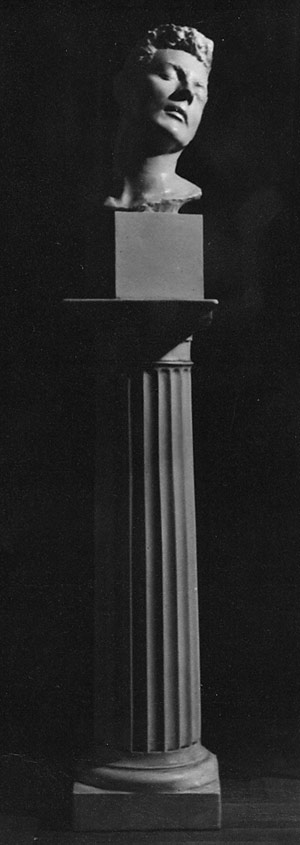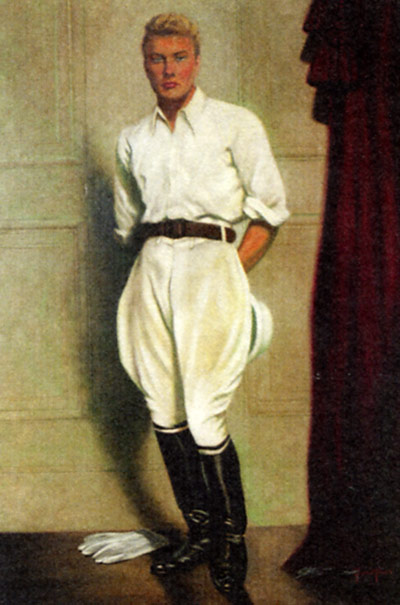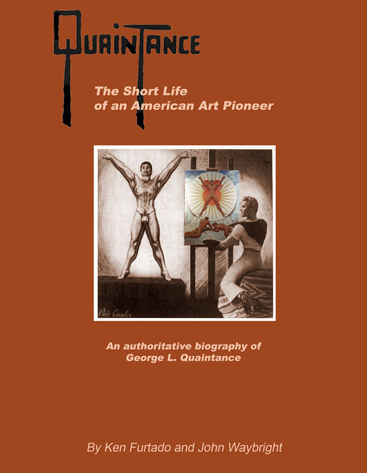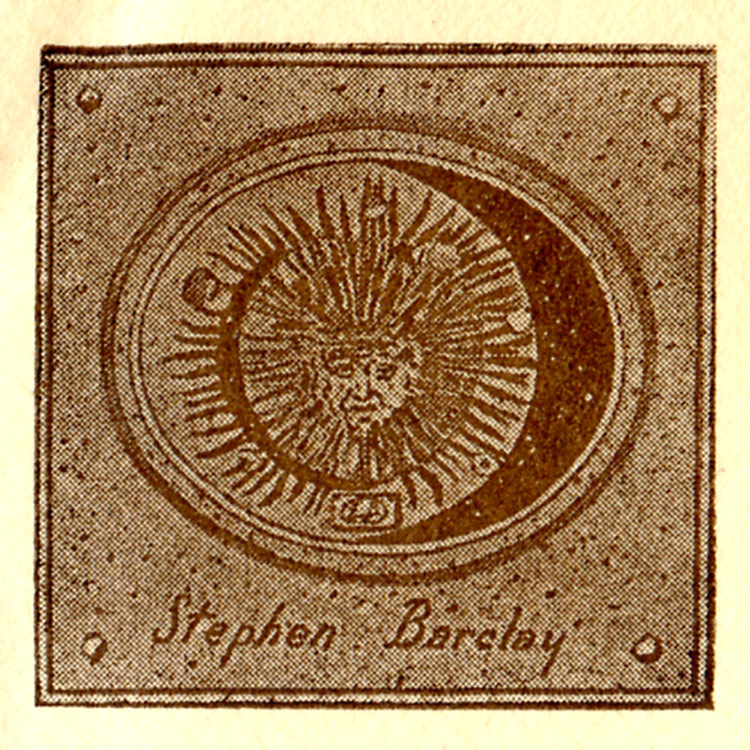Stephen Barclay was a handsome young man with long, thick and wavy blond hair who posed for at least six paintings by Quaintance, though you won't see his face or form in any of the iconic canvases.
He revealed his existence on Aug. 25, 1979, when he replied by letter to an advertisement in The Advocate. His personal stationery bore the custom crest shown here. Barclay, an interior designer, was living in Los Angeles at the time.
The advertiser was looking to acquire original paintings by George Quaintance. Barclay stated in his letter that he owned two portraits of "the same young man, blonde and handsome." He did not say at that time that he was the young man. He was asking $1,500 for the pair of paintings.
 In the mutual correspondence that ensued, Barclay disclosed that he was the young man in the paintings. The portrait of him wearing a burgundy blazer is signed and dated 1940; it currently belongs to a private collector. The life-sized portrait of Barclay wearing polo gear, painted a year later, is prominently displayed at the Tom of Finland Foundation.
In the mutual correspondence that ensued, Barclay disclosed that he was the young man in the paintings. The portrait of him wearing a burgundy blazer is signed and dated 1940; it currently belongs to a private collector. The life-sized portrait of Barclay wearing polo gear, painted a year later, is prominently displayed at the Tom of Finland Foundation.
In the 1940 painting, Quaintance used his early, vertical signature with square block letters. That signature appears at the lower left and cannot be seen in this photo. The full-length portrait shows a different hairstyle and the more familiar signature with the exaggerated descenders on the letters "Q" and "t." The signature appears at the lower right.
 According to Barclay's correspondence, Quaintance painted him "six or seven" times; several of those were nudes. Barclay writes, "One nude was stolen in New York and the others George kept." Quaintance also sculpted a life-sized bust of his handsome friend, a snapshot of which is in one of his scrapbooks. Quaintance also kept black and white snapshots of the two canvases shown here — but none of the nudes — in his scrapbooks. According to an entry, Barclay modeled under the name Jay Peter Dowd.
According to Barclay's correspondence, Quaintance painted him "six or seven" times; several of those were nudes. Barclay writes, "One nude was stolen in New York and the others George kept." Quaintance also sculpted a life-sized bust of his handsome friend, a snapshot of which is in one of his scrapbooks. Quaintance also kept black and white snapshots of the two canvases shown here — but none of the nudes — in his scrapbooks. According to an entry, Barclay modeled under the name Jay Peter Dowd.
 Based on his appearance in the portraits, Barclay was probably in his twenties when they were painted. It is not known whether he and Quaintance ever had a relationship other than one of artist and model. Neither his letters nor anything in the scrapbooks suggests they were lovers, and Barclay was definitely not Quaintance's "type," but it invites speculation. In his correspondence, Barclay describes Quaintance as "a brilliant artist and a kind and gentle person." He added a postscript about the paintings: "Aside from the Quaintance signatures, I believe they should be properly admired also as true Art-Deco period subjects."
Based on his appearance in the portraits, Barclay was probably in his twenties when they were painted. It is not known whether he and Quaintance ever had a relationship other than one of artist and model. Neither his letters nor anything in the scrapbooks suggests they were lovers, and Barclay was definitely not Quaintance's "type," but it invites speculation. In his correspondence, Barclay describes Quaintance as "a brilliant artist and a kind and gentle person." He added a postscript about the paintings: "Aside from the Quaintance signatures, I believe they should be properly admired also as true Art-Deco period subjects."
Sadly, the only paintings known to survive are those shown here.
Readers are always invited to contribute questions and opinions. If you know anything about Barclay or Dowd, or his relationship to Quaintance, please share it. And if you have any information about the lost nudes, Quaintance admirers waits with bated breath to learn it!
Postscript
Reed Massengill is one of the authors of the 2010 Taschen coffee-table book, Quaintance. In another of his books, The Male Ideal: Lon of New York and the Masculine Physique, Massengill quotes Lon as saying, "I met George through Jay Dowd, a mutual friend of ours who was crazy about my pictures." A casual photo of Dowd (clothed) appears on p. 40 of that book, providing visual confirmation that Dowd and Barclay were the same person.


